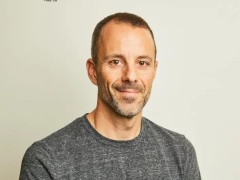
As 2021 comes to a close, ending a year that saw streamers grab headlines as the driving force behind European content growth, producers should start bracing themselves for that streamer-fuelled upswing to reach a tipping point in 2022. In fact, they should prepare for the overall pot of available resources to shrink.
That’s the main takeaway from London-based Enders Analysis in a new report on the state of European production in the digital era. According to the media consultancy, Netflix — which was considered Europe‘s largest commissioner of scripted content originals in 2020 — and other big streaming platforms like Amazon and Disney Plus aren’t likely to gain much more momentum in terms of European subscription growth.
The impact of European SVOD market penetration getting close to hitting its ceiling combined with streamers’ need to start turning a profit (while unable to raise subscription fees by very much), plus the ongoing erosion of resources from incumbent broadcasters “leads us to believe [that going forward] the total pot won’t increase,” says Enders senior analyst Francois Godard.
In fact, due to the change of momentum in the market, overall resources for European content producers are only likely to decrease.
“We’ve been through four or five years when all the new money [in Europe] was coming from the streamers,” says Godard, adding that sometimes the streamers “have been pretty generous,” prompting costs of talent, crew and facilities to rise in some countries.
“But this is going to stop at some point,” he notes. “The streamers are starting to become more stingy; maybe some of them are going to start cutting back.” And, rather than high-end shows like Netflix’s “The Crown,” they are starting to spread their resources widely, spending more on documentaries and non-scripted content, which is cheaper to produce.
European SVOD penetration won’t reach U.S. levels
The report claims that “penetration of global SVOD platforms will very likely peak at levels much lower than in the United States” for a variety of reasons.
While Netflix in 2021 continued to perform strongly in the U.K., with a 57% household penetration that’s roughly on par with the U.S. (which is at 58%, according to the report), and also grew in the Nordics (58%), in the rest of Europe that penetration is much lower, with Germany (29%), France (28%) and Spain (21%) achieving half of Netflix’s U.S. penetration and Italy (15%) at less than a third.
As for Amazon Prime Video, U.K. penetration is 42%, which is less than in the U.S. (58%), while Amazon is in 33% of households in Germany (outpacing Netflix); in 16% of households in France; in 9% of households in Spain; in 11% of households in Italy; and in 4% of households in the Nordics, where it launched late in in 2020.
Disney Plus, which in 2020 launched in Europe only four months after the U.S., has attained close to its 26% household penetration Stateside in the Nordics, where it has a 24% penetration, according to the report. But in other European markets, the Disney platform has achieved less than half its U.S. results, with 17% penetration in the U.K., 10% in Germany; 8% in France and 4% in both Spain and Italy.
“We don’t see where in Europe you are going to have much growth [for the streamers],” said Godard. However, he allows that there could be some growth that is platform-dependent. For example, in terms of impact on resources, “maybe Amazon is different, because they are driven by a different business model.” Prime Video is set to shoot season 2 of its five-season series adaptation of “The Lord of the Rings” in the U.K., reportedly the priciest TV show ever made.
Yet overall spend on European content from the streamers will probably decline, as will the U.S. studio model under which the streamers have been acquiring all IP from European producers against a payment for all production costs, plus a profit margin.
Indie production model and partnerships on the rise
As the SVOD-led production boom will likely subside, Europe’s independent production model in which producers and broadcasters seek co-production partnerships and pre-sales on high-end projects — that producers get to hold on to the IP for — will be propped up, according to the report. This will also be helped by E.U. regulation, specifically Europe’s AVMS directive which is prompting new rules of engagement between producers and streamers. The model will also be supported by the market consolidation of existing European players, both production companies and broadcasters.
On the production side, the report cites companies such as ITV Studios and Fremantle as positive examples of entertainment-based groups that have been buying boutique producers across Europe, which keep their autonomy while benefitting from enhanced resources. They’re the types of players that have the scale to invest in prime IP in a market in which the streamers are both their clients and sometimes their competitors.
Meanwhile, Luxembourg-based RTL Group, which is the largest free-TV operator in Europe, is expected to make a move in 2022 to buy its German rival ProSieben, which in turn could lead to an alliance between TF1 and M6 in France (who are already collaborators on SVOD platform Salto) and the establishment of a pan-European streaming platform across several territories. Though Enders gives RTL’s alleged project a 50% chance of happening, it says that, if it does, “the resilience of the European broadcasting sector with the global platforms would be considerably reinforced.”
All told, “the pot will get smaller and the smarter producers will be those who manage to keep their hands on IP,” says Godard, who envisions a scenario in which “consolidated European broadcasters and producers with resilient resources [will] find themselves in a better competitive position to snatch premium IP,” as the report puts it.
Ultimately, says the analyst, the message to producers is that there will probably be a bit less money on the whole, “so don’t necessarily continue to prioritize platforms when pitching your best projects.”
Says Godard: “Think about local for local as an opportunity, and build long-term IP that you can exploit, instead of one-off shows that may pay a lot, but don’t build your business.”






